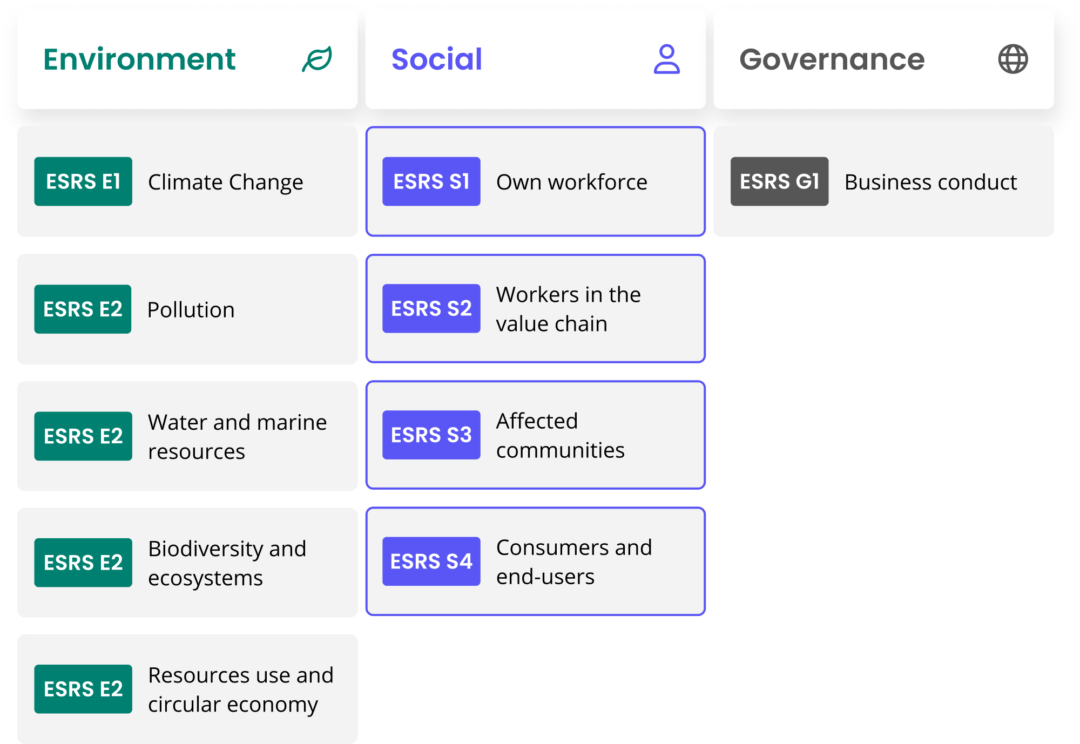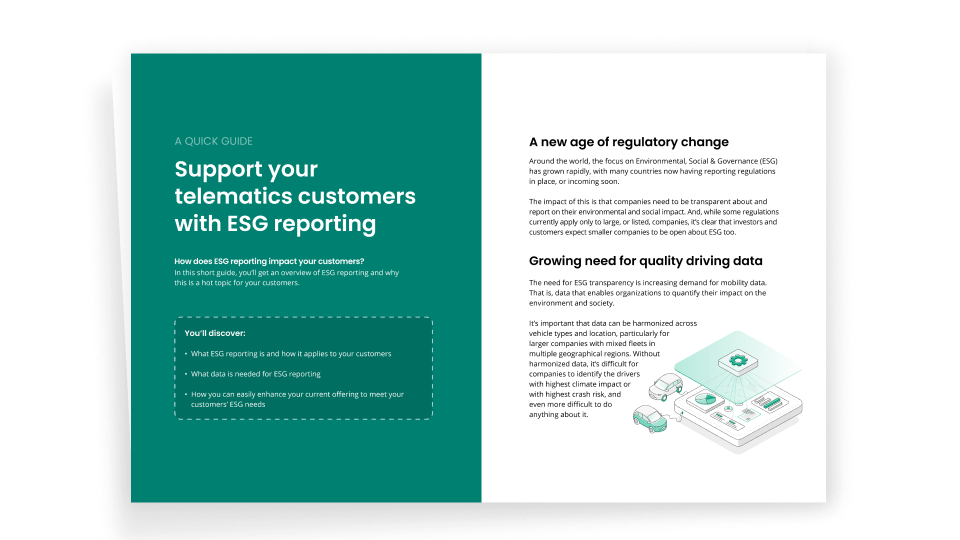Where does driver safety sit in CSRD reporting?

The Corporate Sustainability Reporting Directive (CSRD) is an EU regulation that requires companies to report on their social and environmental impact. As well as being the largest and most comprehensive regulation to date, the CSRD applies to more companies than ever before.
With this in mind, companies with fleets operations – as well as motor insurers and logistics firms – will be looking to obtain additional mobility data that includes both safety and sustainability insights. This opens new doors for telematics companies who can help their customers obtain the data they need. Here, we look at the essential basics of CSRD reporting, where driver safety fits into requirements and what type of data will be in demand.
Understanding CSRD reporting
While the CSRD currently only applies to larger organizations and those meeting certain financial criteria, it is setting a new global benchmark for reporting standards. That’s because of its comprehensive nature and its efforts to increase transparency for investors, consumers, and other business stakeholders.
The result of this is that the CSRD’s requirements are likely to be adopted on a much wider scale. In other words, even your customers that are not yet within scope of the CSRD will likely use it as a framework for disclosing their social and environmental impact.
CSRD reporting and driver safety
Under the CSRD, companies are required to disclose social and environmental impacts in line with the European Sustainability Reporting Standards (ESRS). Driver safety fits into the standards as part of the social disclosures, specifically ‘Own workforce’, ‘Workers in the value chain’, ‘Affected communities’ and ‘Consumers and end-users’.

Understanding social disclosures
ESRS S1 requires companies to disclose information related to their own workforce; this includes health and safety. Therefore, to meet these requirements, companies might share information about their driver safety policies, and what they do to identify and mitigate driver risk.
ESRS S2 is similar but extends to the company’s management of driver safety for value chain workers. That includes all workers within the value chain who could be impacted by the company’s operations and how those operations are managed.
ESRS S3 is about affected communities and how any impacts on communities are managed.
Finally, ESRS S4 requires the disclosure of information on how the company manages consumer and end-user impacts. This includes managing personal safety through health and safety practices.
A note about the forthcoming CSDDD
Your customers may also be increasingly aware of the EU’s Corporate Sustainability Due Diligence Directive (CSDDD), which has already been approved by the European Parliament and looks set to come into force in 2025.
The CSDDD requires large companies to identify, communicate AND act on activities that may result in adverse environmental and human rights impacts globally. Not just in relation to their own operations, but also those of their subsidiaries and value chain partners.
And of course, let’s not forget that there are other regulations at play in other parts of the world, including China, Singapore, Australia, and the U.S., to name a few. Which of these apply to your customers?
Measuring driver safety
When it comes to being transparent about social impact (including driver safety), companies will be looking to show what they do to manage and reduce driver risk. And, because the ESRS framework extends beyond the company itself, this includes demonstrating how they mitigate risk at a wider societal level.
But, as we know, to manage risk you need to measure it. And this is where your solutions come in. The more actionable data your customers can obtain to quantify their impact on society, the better position they will be in to do something about it and fulfil CSRD reporting requirements AND CSDDD requirements.
What type of data will be needed to fulfil driver safety in CSRD reporting requirements?
A simple starting point for your customers would be to:
- Measure their baseline performance (i.e. current driver risk level/ crash probability)
- Assess the policies they currently have in place
- Evaluate the potential social impact of their company, considering those who drive for work purposes, how this could affect communities and how this looks through the value chain
- Set targets and define KPIs
- Monitor and report on progress
Having the right data, analyzed with in depth ESG reporting in mind, along with guidance and reporting templates to help them meet their requirements in this new area is invaluable; and without it they might turn to another provider. Now is the time to think about whether you have adequate data and tools to help your customers fulfil the social part of CSRD reporting. If not, can you enhance your solution to provide the data and tools your customers need?
Telematics companies: Interested to learn more about helping your customers with ESG data? Check out our quick guide


